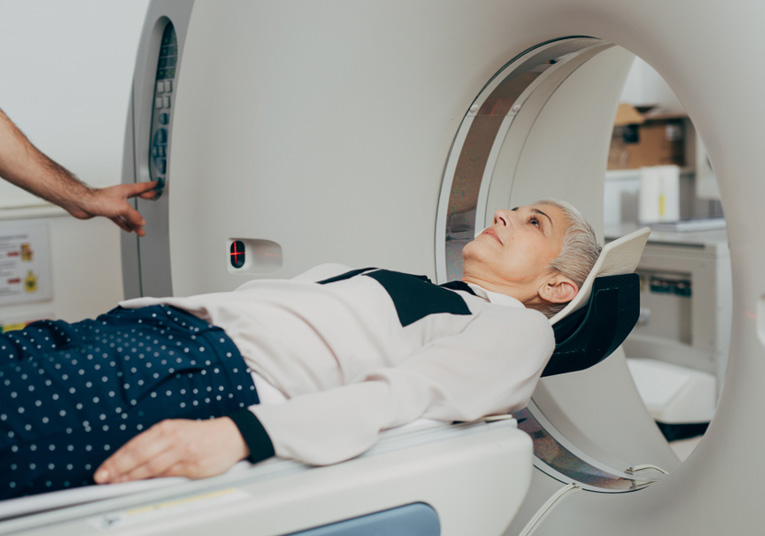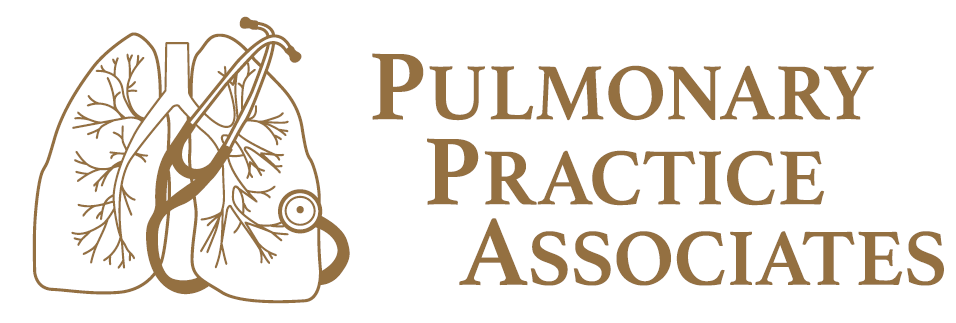CT Scan

What Is CT Lung Screening?
CT lung screening is a noninvasive, painless procedure that uses low-dose X-rays to screen the lungs for cancer in just 30 seconds. A CT lung screening allows the radiologist to look at different levels, or slices, of the lungs using a rotating X-ray beam. It is performed on a multislice spiral computed tomography (CT) scanner and can detect smaller nodules or cancer than standard chest X-rays.
A tumor or nodule is a mass of cells that grows on the lungs. It can be benign (noncancerous) or malignant (cancerous). By detecting malignant tumors in an early stage with CT lung screening, the cancer cells can be treated at a time when the cancer still has promising survival rates and is localized to the lungs.
How Is CT Lung Screening Performed?
There are no preparations required for this study. During the exam, patients lie on their backs on an exam table with arms above the head. They must hold their breath briefly as the pictures are being taken. For a short period of time, the body may be covered by a scanner, but the scanner is open at the back and front so that the patient can see out. The technologist is always able to see and hear the patient during the five-minute procedure.
Why Is Lung Screening Important?
Lung cancer is the number one cause of cancer-related deaths in the United States. This disease is responsible for more deaths annually than breast, prostate, and colorectal cancers combined. In the United States, the lifetime risk of developing invasive lung cancer is 1 in 17 for men and 1 in 18 for women.
It is estimated that over 80 percent of lung cancers could be cured if detected at an early stage. Unfortunately, only 15 percent of lung cancers are caught at this stage, making the five-year survival rate for all stages of lung cancer 20 percent. Catching lung cancer in an early stage while it is still localized to the lung is essential. A person’s chance of survival decreases when the tumor grows to be 3 centimeters or more. If the cancer spreads to areas of the body outside the lungs, the survival rate is only 5 percent, compared with 70 percent if the cancer is detected early. CT lung screening is capable of detecting lung nodules as small as 2 or 3 millimeters. By catching malignant tumors when they are still small, they can be surgically removed before disease spreads to other areas of the body.
Who Should Have Lung Screening?
The U.S. Preventive Services Task Force, National Comprehensive Cancer Network, American College of Chest Physicians, American Society of Clinical Oncology, American Cancer Society, American Thoracic Society, and the American College of Radiology recommend lung screening for individuals between 55 and 77 who have any of the following risk factors:
- No history or symptoms of lung cancer
- 30 pack-year or more smoking history (one pack of cigarettes per day for 30 years, two packs of cigarettes per day for 15 years, etc.)
- Quit less than 15 years ago
Follow-up screening is recommended every once a year for patients who remain at high risk. It is important for patients to be aware that having a negative scan (no nodules or cancer) does not mean that lung cancer will not develop in the future if they remain at high risk for the disease.
Links to More Information
- Research in theNew England Journal of Medicine (Feb. 21, 2013) found that lung cancer screening with CT would detect more cancers and save more lives if current screening criteria were modified to include a wider range of individuals at risk.
- See the latest recommendations from the S. Preventive Services Task Force.
Women and Lung Cancer
In 1987, lung cancer surpassed breast cancer as the leading cause of cancer deaths in women. Although the number of lung cancer deaths in men has plateaued, the number of lung cancer deaths among women continues to increase. The American Lung Association’s Lung Force seeks to unite women to stand together against lung cancer and for lung health.
How Accurate Is Lung Screening?
Recent studies show that CT lung screening is more sensitive than standard lung screening methods (chest X-ray, sputum cytology) in detecting lung cancer. Unlike standard chest X-rays, CT lung screening takes cross-sectional images of the lungs. This allows the radiologist to see the lungs from top to bottom. Chest X-rays only show views of the lungs from the front and sides. With 3-D imaging, CT lung screening can measure the growth of tumors in all directions whereas standard X-rays can only measure tumors at their widest point, preventing the radiologist from tracking changes in the volume of the tumor.
Does the Procedure Involve Radiation?
CT lung screening does involve exposure to radiation in the form of X-rays, but the benefit of an accurate diagnosis far outweighs the risk. The effective radiation dose from this procedure is about 1 to 1.5 millisieverts, which is less than the average person receives from background radiation in six months.


